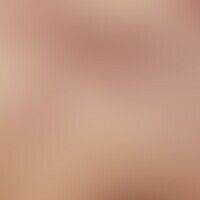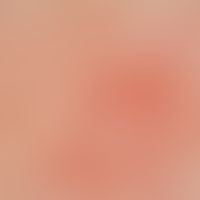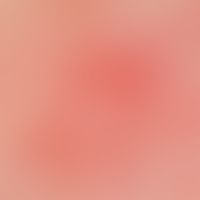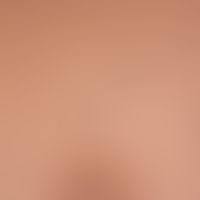Image diagnoses for "blue"
48 results with 139 images
Results forblue

Hidrocystoma D23.L
Hidrocystoma: Survey image: Since about 2 years gradually developing, disseminated, colorless and black-blue, painless nodules of 0.1-0.3 cm size at the bridge of the nose of a 14-year-old patient.
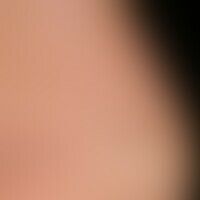
Hidrocystoma D23.L
Hidrocystoma. detail enlargement: multiple, chronically stationary (no noticeable growth), black-blue, 0.1-0.3 cm measuring elevation; small white comedones are also visible.
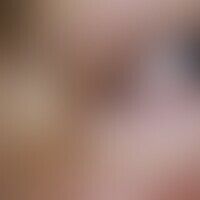
Hidrocystoma D23.L
Hidrocystoma: In this 62-year-old man a solitary, black, calotte-shaped, indolent elevation in the region of the right lower lid, a so-called hidrocystoma noire, has existed for one year.
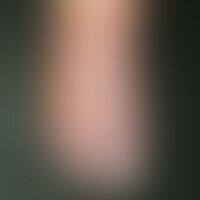
Acrocyanosis I73.81; R23.0;
Acrocyanosis, livid discoloration of the lower extremity, here with pronounced onychomycosis.
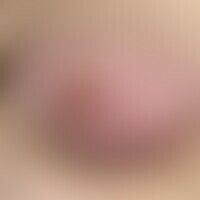
Acrocyanosis I73.81; R23.0;
Acrocyanosis; diffuse reddish-livid skin discoloration of both mammae only occurring in cold weather with large-meshed marbling; reduced skin temperature; possible doughy, cushion-like swellings, symmetrical infestation, numbness and iris diaphragm phenomenon.
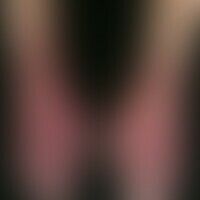
Acrocyanosis I73.81; R23.0;
acrocyanosis. acute, changeable, homogeneously laminar, reddish-livid skin discoloration with reduced temperature. doughy swelling, hyperhidrosis, perniones and cutis marmorata. sometimes slight pain and dysesthesia.
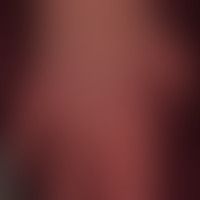
Acrocyanosis I73.81; R23.0;
Acrocyanosis in right heart failure in age-related atrophic, shiny skin with solar lentigines on the back of the hand (DD: chronic Lyme disease - picture of acrodermatitis chronica atrophicans).
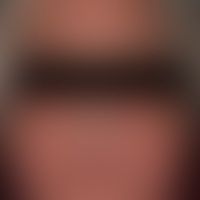
Acrocyanosis I73.81; R23.0;
acrocyanosis in right heart failure. extensive homogeneous reddening of the facial areas. clearly more prominent in cold weather. moderate cyanosis of the red of the lips. age involution of the chin region with oblique chin furrows. moist corners of the lips with occasional pearlèche.

Acrocyanosis I73.81; R23.0;
acrocyanosis in age-atrophied, shiny skin with half and half nails. DD: chronic lyme borreliosis. here the picture of acrodermatitis chronica atrophicans is present. the cold-dependence of the redness is not very pronounced. conspicuous (see stronger enlargement) the smooth atrophic skin surface. a positive borrelia serology is always to be expected in this stage of a borrelia infection.
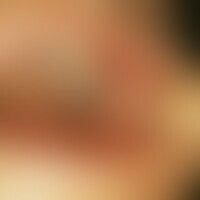
Amalgam tattoo L81.8
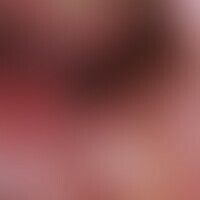
Amalgam tattoo L81.8
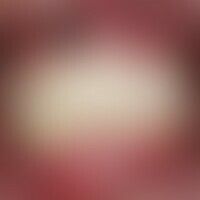
Amalgam tattoo L81.8
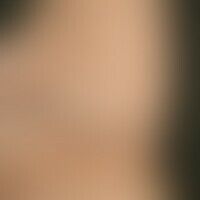
Angiodysplasia Q87.8
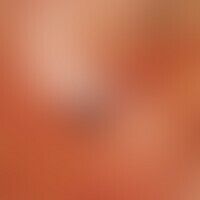
Angiosarcoma of the head and face skin C44.-
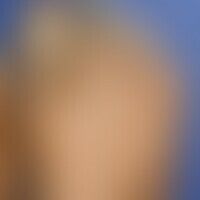
Arterial occlusive disease peripheral I73.9
Peripheral arterial occlusive disease. Necrosis in the area of the 2nd toe in peripheral arterial occlusive disease.
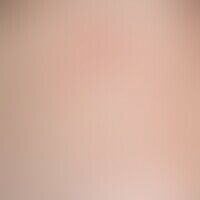
Varice reticular I83.91
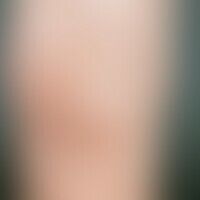
Varice reticular I83.91
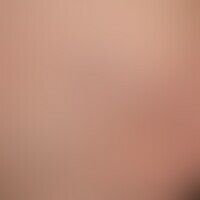
Varice reticular I83.91
Spider veins: Dark blue-red, 0.5-1.0 mm thick, tortuous dilated venules with irregular, ampulla or nodular ectasia on the medial left thigh of a 69-year-old woman.
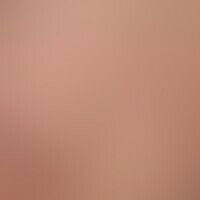
Varice reticular I83.91
Spider veins. dark blue-red, 0.5-2.0 mm wide, tortuous varicose veins with irregular, ampulla- or nodular ectasia on the medial right thigh of a 69-year-old woman.
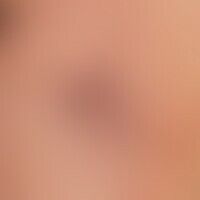
Varice reticular I83.91
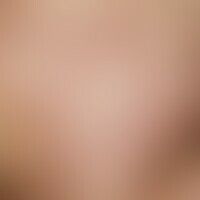
Varice reticular I83.91
